Last week, the Pew Internet & American Life Project released a study on blogging. The findings describe the characteristics of the blogging community. The ways blogging as a communication tool supports public speech are gaining clarity and support through this study. It estimates that 12 million people in the US are blogging. Bloggers, as compared to internet users, are more ethnically diverse, younger and highly wired. Further, an important aspect is that the majority of bloggers (54%) has never published media before they started blogging. 37% of bloggers report that they post about personal experiences, the largest response for that question. Not surprisingly, bloggers read blogs, and there is a direct correlation between the frequency of a blogger’s posting and how often she read blogs. The growth of blogging will become more important as it is encouraging the roles of reader and writer to merge. We’ve discussed this merger before, but it is great to have numbers to support the discussion.
As internet users are becoming authors and publishers, I am curious to watch the future development of bloggers as a community and the possible impact they can have on policy issues. Is there the opportunity for bloggers to become a vehicle for social change, especially on Internet issues? 12 million bloggers could demand the attention of legislators and courts on the issues of net neutrality, copyright, privacy and open access. Although, as we have discussed in the past, the blogosphere is often a partisan space. The Pew study also confirms its diversity. Therefore, mobilizing this community is a challenging task. However, the sheer number of bloggers foretells that some of them are bound to find themselves dealing with these issues, especially with copyright and intellectual property. My hope then would be that these inevitable frictions would bring further into the mainstream these issues and broaden the discussion by the often one-sided debates of the telecommunications industry and media conglomerates.
Category Archives: IP
lulu.tv testing some boundaries of copyright
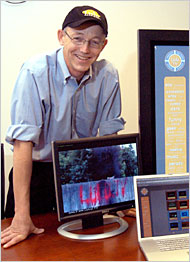 Lulu.tv made recent news with their new video sharing service which has a unique business model. Bob Young the head of Lulu.tv and founder of the self publishing service Lulu.com also founded Red Hat, which commercially sells open source software. He has been doing interesting experiments in creating business that harness the creative efforts of people.
Lulu.tv made recent news with their new video sharing service which has a unique business model. Bob Young the head of Lulu.tv and founder of the self publishing service Lulu.com also founded Red Hat, which commercially sells open source software. He has been doing interesting experiments in creating business that harness the creative efforts of people.
The new revenue sharing strategy behind Lulu.tv is fairly simple. Anyone can post or view content for free, as with Google Video or YouTube. However, it offers a “pro” version, which charges users to post video. 80% of the fees paid by goes to an account and the money is distributed each month based on the number of unique downloads to subscribing members.
This strategy has a similar tone to the ideas of Terry Fisher who has been promoting and the related idea of an alternative media cooperative model. In Fisher’s model, viewers (rather than the content creators) pay a media fee to view content and the collected revenues are redistributed to the creators in the cooperative. Lulu.tv makes logical adjustments to the Fisher model because other video sharing services are already offering their content for free. Because there are a lot more viewers of these sites than posters, the potential revenue has limited growth. However, I can imagine if the economic incentive becomes great enough, then the best content could gravitate to Lulu.tv and they could potentially charge viewers for that content. Alternatively, revenue from paid advertising could be added the pool of funds for “pro” users.
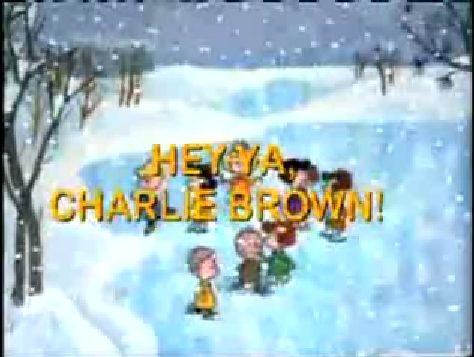 Introducing money into environments also produces friction and video sharing will be no different. Moving content from a free service to a pay service will increase copyright concerns, which have yet to be discussed. People tend to post “other people’s content” on YouTube and GoogleVideo, which often contains copyrighted material. For example, Hey Ya, Charlie Brown scores a Charlie Brown Christmas Special with Outkast’s hit single. It is not clear if this video was posted by a pro user, or who made the video and if any rights were cleared. Although, for instance, YouTube takes down content when asked to by copyright holders, many holders do not complain because that media (for instance 80s music videos) have limited or no replay value. With video remixes, creators have traditionally given away their work and allow it to be shared because there was no or little earning potential for the remixes. However with Lulu.tv’s model, this media is suddenly able to generate money. Remixers who have traditionally allows the viral distribution of their work, now they have an economic incentive to host their content in one specific location and hence control the distrbution of the work (sound familiar?)
Introducing money into environments also produces friction and video sharing will be no different. Moving content from a free service to a pay service will increase copyright concerns, which have yet to be discussed. People tend to post “other people’s content” on YouTube and GoogleVideo, which often contains copyrighted material. For example, Hey Ya, Charlie Brown scores a Charlie Brown Christmas Special with Outkast’s hit single. It is not clear if this video was posted by a pro user, or who made the video and if any rights were cleared. Although, for instance, YouTube takes down content when asked to by copyright holders, many holders do not complain because that media (for instance 80s music videos) have limited or no replay value. With video remixes, creators have traditionally given away their work and allow it to be shared because there was no or little earning potential for the remixes. However with Lulu.tv’s model, this media is suddenly able to generate money. Remixers who have traditionally allows the viral distribution of their work, now they have an economic incentive to host their content in one specific location and hence control the distrbution of the work (sound familiar?)
I’m quite glad that Lulu.tv is experimenting in this vein. If it succeeds, the end effect will push the once fringe media and distribution even deeper into the mainstream. For people concerned with overreaching copyright protection, this could be also be disastrous depending on how we as a culture decide to accept it. The copyright holders could use Lulu.tv has a further argument for yet stronger protections to intellectual property. On the other hand, it could mainstream the idea that remixing is a transformative use. The tensions between media producers, copyright holders, distributors and viewers continue to be evolve and are important to document and note as they move forward.
ip watch: this week at wipo
As Jesse posted earlier, we attended the Access 2 Knowledge Conference 2006. It was informative and we got a chance to listen to and talk with a great variety of people working in this area.
One very important issue that was surprisingly only raised on occasion and receives even less coverage in the mainstream media is the Treaty for the Protection of the Rights of Broadcasting, Cablecasting and Webcasting Organizations being presented this week at the World Intellectual Property Organization (WIPO) in Geneva. A panelist at A2K, Jamie Love, who is from the Consumer Project on Technology posted on the Huffingpost last year on this treaty. CPT is a great resource for drafts of the Treaty and well as analysis from various media covering the issue. Thiru Balasubramaniam also gives a good update on the controversial treaty.
The proposed treaty seeks to add a new layer of IP over any broadcast media, including the media delivered via the Internet. Here, webcasting refers to not only the colloquial meaning for streaming video but also the general transmission of web content over the Internet. Love notes that this treaty grants to webcasters IP rights over what they transmit, which is “separate and in addition to the rights (if any) of copyright owners.” Therefore, webcasters would retain rights over even material in the public domain.
Love further gives this explaination:
“If you download a file from the Internet, you would have to get the permission of the web page operator before you could republish the data elsewhere. This permission would be in addition to any permissions you would need from the actual copyright owner, and it would even be required if you are seeking to publish something that was either in the public domain under copyright law, or that had been licensed for distribution under something like a creative commons license.”
This treaty would dramatically change the IP landscape of broadcasting. Aside from the fact that the treaty would give rights to broadcasters that never existed before in the US, its passage would severely limit the democratic culture of self publishing that made the Internet important in the first place.
a2k wrap-up
—Jack Balkin, from opening plenary
I’m back from the A2K conference. The conference focused on intellectual property regimes and international development issues associated with access to medical, health, science, and technology information. Many of the plenary panels dealt specifically with the international IP regime, currently enshrined in several treaties: WIPO, TRIPS, Berne Convention, (and a few more. More from Ray on those). But many others, instead of relying on the language in the treaties, focused developing new language for advocacy, based on human rights: access to knowledge as an issue of justice and human dignity, not just an issue of intellectual property or infrastructure. The Institute is an advocate of open access, transparency, and sharing, so we have the same mentality as most of the participants, even if we choose to assail the status quo from a grassroots level, rather than the high halls of policy. Most of the discussions and presentations about international IP law were generally outside of the scope of our work, but many of the smaller panels dealt with issues that, for me, illuminated our work in a new light.
In the Peer Production and Education panel, two organizations caught my attention: Taking IT Global and the International Institute for Communication and Development (IICD). Taking IT Global is an international youth community site, notable for its success with cross-cultural projects, and for the fact that it has been translated into seven languages—by volunteers. The IICD trains trainers in Africa. These trainers then go on to help others learn the technological skills necessary to obtain basic information and to empower them to participate in creating information to share.
—Ronaldo Lemos
The ideology of empowerment ran thick in the plenary panels. Ronaldo Lemos, in the Political Economy of A2K, dropped a few figures that showed just how powerful communities outside the scope and target of traditional development can be. He talked about communities at the edge, peripheries, that are using technology to transform cultural production. He dropped a few figures that staggered the crowd: last year Hollywood produced 611 films. But Nigeria, a country with only ONE movie theater (in the whole nation!) released 1200 films. To answer the question of how? No copyright law, inexpensive technology, and low budgets (to say the least). He also mentioned the music industry in Brazil, where cultural production through mainstream corporations is about 52 CDs of Brazilian artists in all genres. In the favelas they are releasing about 400 albums a year. It’s cheaper, and it’s what they want to hear (mostly baile funk).
We also heard the empowerment theme and A2K as “a demand of justice” from Jack Balkin, Yochai Benkler, Nagla Rizk, from Egypt, and from John Howkins, who framed the A2K movement as primarily an issue of freedom to be creative.
The panel on Wireless ICT’s (and the accompanying wiki page) made it abundantly obvious that access isn’t only abut IP law and treaties: it’s also about physical access, computing capacity, and training. This was a continuation of the Network Neutrality panel, and carried through later with a rousing presentation by Onno W. Purbo, on how he has been teaching people to “steal” the last mile infrastructure from the frequencies in the air.
Finally, I went to the Role of Libraries in A2K panel. The panelists spoke on several different topics which were familiar territory for us at the Institute: the role of commercialized information intermediaries (Google, Amazon), fair use exemptions for digital media (including video and audio), the need for Open Access (we only have 15% of peer-reviewed journals available openly), ways to advocate for increased access, better archiving, and enabling A2K in developing countries through libraries.
—The Adelphi Charter
The name of the movement, Access to Knowledge, was chosen because, at the highest levels of international politics, it was the one phrase that everyone supported and no one opposed. It is an undeniable umbrella movement, under which different channels of activism, across multiple disciplines, can marshal their strength. The panelists raised important issues about development and capacity, but with a focus on human rights, justice, and dignity through participation. It was challenging, but reinvigorating, to hear some of our own rhetoric at the Institute repeated in the context of this much larger movement. We at the Institute are concerned with the uses of technology whether that is in the US or internationally, and we’ll continue, in our own way, to embrace development with the goal of creating a future where technology serves to enable human dignity, creativity, and participation.
access to the a2k conference 2006
Jesse and I have just arrived at the Yale University to police barricades, blocked of streets, bus loads of demonstrators, and general confusion. I wish I could say that it was in support of protecting open and accessible knowledge, as we are here to attend the Access 2 Knowledge conference. However, the crowds of Falun Gong supporters (with a few Free Tibet activists in the mix) were protesting the arrival of President Hu Jintao from China. Wandering the streets of New Haven to find an unblocked entrance to the law school, Jesse and I reflected a bit on the irony of the difficulty of physically “accessing” the building where we will hear current thinking and planning on the making knowledge accessible.
The conference’s stated goal is to “bring together leading thinkers and activists on access to knowledge policy from North and South, in order to generate concrete research agendas and policy solutions for the next decade…The A2K Conference aims to help build an intellectual framework that will protect access to knowledge both as the basis for sustainable human development and to safeguard human rights.” Sessions will cover peer production, economics of a2k, copyright, access to science and medicine, network neutrality and privacy.
We very excited to be here, as presenters include some of our favorite IP / Copyright / Open Content thinkers: Yochai Benkler, Eric Von Hippel, Susan Crawford, and Terry Fisher. We’re sure that by Sunday, we’ll have more to add to the list.
Stay tuned for more.
da vinci, copyright of non-fiction, and intelligent search
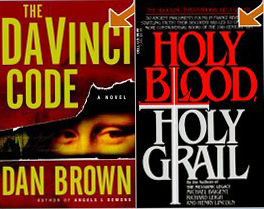
Two of the authors of “Holy Blood, Holy Grail,” recently lost their copyright infringement suit against genre thriller author, Dan Brown, for his book the “Da Vinci Code.” Brown heavily relied on the theories of the secret lineage of Jesus found in Holy Blood (a best seller in its own time.) Both books were published by Random House, but that did not stop Michael Baigent and Richard Leigh from suing their own publisher for copyright infringement. A judge found that Baigent and Leigh could not prove (or even define) the central themes of their book were stolen and further did not think it was a good idea to have authors of “pretend historical books” scour over fiction works looking for stolen ideas.
Mark Stephens, a media lawyer for the losing side lawyer stated:
“Whilst the decision shows that he didn’t infringe copyright, his moral behavior is more, in my view, open to question. It’s clear that he used the fundamental themes and ideas of ‘Holy Blood, Holy Grail,’ and many people will think that morally, Dan Brown owes a debt to Baigent, Leigh and Lincoln.”
Of course, Dan Brown owes a “creative” debt to the authors of Holy Blood, Holy Grail. Just like all fiction authors who use non-fiction (and in this case, I’m using the word loosely), own a debt to the research they do. Claims for compensation for it goes against the centuries old traditions of how culture is created.
Aside note: In my original search, for my post on the Da Vinci code, I mistyped “Devinci Code” in the nytimes.com search, and come up with this:

The nytimes.com article search engine couldn’t find anything. Amusingly, it suggested I was searching for “deviancy code.” Maybe it knows something I do not. And of course, the related sponsor ads on the top and right hand side, showed correctly identified and relevant links.
copyright debates continues, now as a comic book
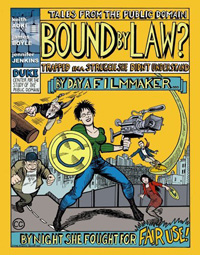 Keith Aoki, James Boyle and Jennifer Jenkins have produced a comic book entitled, “Bound By Law? Trapped in a Sturggle She Didn’t Understand” which portrays a fictional documentary filmmaker who learns about intellectual property, copyright and more importantly her rights to use material under fair use. We picked up a copy during the recent conference on “Cultural Environmentalism at 10” at Stanford. This work was funded by the Rockefeller Foundation, the same people who funded “Will Fair Use Survive?” from the Free Expression Policy Project of the Brennan Center at the NYU Law School, which was discussed here upon its release. The comic book also relies on the analysis that Larry Lessig covered in “Free Culture.” However, these two works go into much more detail and have quite different goals and audiences. With that said, “Bound By Law” deftly takes advantage of the medium and boldly uses repurposed media iconic imagery to convey what is permissible and to explain the current chilling effect that artists face even when they have a strong claim of fair use.
Keith Aoki, James Boyle and Jennifer Jenkins have produced a comic book entitled, “Bound By Law? Trapped in a Sturggle She Didn’t Understand” which portrays a fictional documentary filmmaker who learns about intellectual property, copyright and more importantly her rights to use material under fair use. We picked up a copy during the recent conference on “Cultural Environmentalism at 10” at Stanford. This work was funded by the Rockefeller Foundation, the same people who funded “Will Fair Use Survive?” from the Free Expression Policy Project of the Brennan Center at the NYU Law School, which was discussed here upon its release. The comic book also relies on the analysis that Larry Lessig covered in “Free Culture.” However, these two works go into much more detail and have quite different goals and audiences. With that said, “Bound By Law” deftly takes advantage of the medium and boldly uses repurposed media iconic imagery to convey what is permissible and to explain the current chilling effect that artists face even when they have a strong claim of fair use.
Part of Boyle’s original call ten years ago for a Cultural Environmentalism Movement was to shift the discourse of IP into the general national dialogue, rather than remain in the more narrow domain of legal scholars. To that end, the logic behind capitalizing on a popular culture form is strategically wise. In producing a comic book, the authors intend to increase awareness among the general public as well as inform filmmakers of their rights and the current landscape of copyright. Using the case study of documentary film, they cite many now classic copyright examples (for example the attempt to use footage of a television in the background playing the”Simpsons” in a documentary about opera stagehands.) “Bound By Law” also leverages the form to take advantage of compelling and repurposed imagery (from Mickey Mouse to Mohammed Ali) to convey what is permissible and the current chilling effect that artists face in attempting to deal with copyright issues. It is unclear if and how this work will be received in the general public. However, I can easily see this book being assigned to students of filmmaking. Although, the discussion does not forge new ground, its form will hopefully reach a broader audience. The comic book form may still be somewhat fringe for the mainstream populus and I hope for more experiments in even more accesible forms. Perhaps the next foray into the popular culture will an episode of CSI or Law & Order, or a Michael Crichton thriller.
relentless abstraction
 Quite surprisingly, Michael Crichton has an excellent op-ed in the Sunday Times on the insane overreach of US patent law, the limits of which are to be tested today before the Supreme Court. In dispute is the increasingly common practice of pharmaceutical companies, research labs and individual scientists of patenting specific medical procedures or tests. Today’s case deals specifically with a basic diagnostic procedure patented by three doctors in 1990 that helps spot deficiency in a certain kind of Vitamin B by testing a patient’s folic acid levels.
Quite surprisingly, Michael Crichton has an excellent op-ed in the Sunday Times on the insane overreach of US patent law, the limits of which are to be tested today before the Supreme Court. In dispute is the increasingly common practice of pharmaceutical companies, research labs and individual scientists of patenting specific medical procedures or tests. Today’s case deals specifically with a basic diagnostic procedure patented by three doctors in 1990 that helps spot deficiency in a certain kind of Vitamin B by testing a patient’s folic acid levels.
Under current laws, a small royalty must be paid not only to perform the test, but to even mention it. That’s right, writing it down or even saying it out loud requires payment. Which means that I am in violation simply for describing it above. As is the AP reporter whose story filled me in on the details of the case. And also Michael Crighton for describing the test in his column (an absurdity acknowledged in his title: “This Essay Breaks the Law”). Need I (or may I) say more?
And patents can reach far beyond medical procedures that prevent diseases. They can be applied to the diseases themselves, even to individual genes. Crichton:
…the human genome exists in every one of us, and is therefore our shared heritage and an undoubted fact of nature. Nevertheless 20 percent of the genome is now privately owned. The gene for diabetes is owned, and its owner has something to say about any research you do, and what it will cost you. The entire genome of the hepatitis C virus is owned by a biotech company. Royalty costs now influence the direction of research in basic diseases, and often even the testing for diseases. Such barriers to medical testing and research are not in the public interest. Do you want to be told by your doctor, “Oh, nobody studies your disease any more because the owner of the gene/enzyme/correlation has made it too expensive to do research?”
It seems everything — even “laws of nature, natural phenomena and abstract ideas” (AP) — is information that someone can own. It goes far beyond the digital frontiers we usually talk about here. Yet the expansion of the laws of ownership — what McKenzie Wark calls “the relentless abstraction of the world” — essentially digitizes everything, and everyone.
cultural environmentalism symposium at stanford
Ten years ago, the web just a screaming infant in its cradle, Duke law scholar James Boyle proposed “cultural environmentalism” as an overarching metaphor, modeled on the successes of the green movement, that might raise awareness of the need for a balanced and just intellectual property regime for the information age. A decade on, I think it’s safe to say that a movement did emerge (at least on the digital front), drawing on prior efforts like the General Public License for software and giving birth to a range of public interest groups like the Electronic Frontier Foundation and Creative Commons. More recently, new threats to cultural freedom and innovation have been identified in the lobbying by internet service providers for greater control of network infrastructure. Where do we go from here? Last month, writing in the Financial Times, Boyle looked back at the genesis of his idea:

We were writing the ground rules of the information age, rules that had dramatic effects on speech, innovation, science and culture, and no one – except the affected industries – was paying attention.
My analogy was to the environmental movement which had quite brilliantly made visible the effects of social decisions on ecology, bringing democratic and scholarly scrutiny to a set of issues that until then had been handled by a few insiders with little oversight or evidence. We needed an environmentalism of the mind, a politics of the information age.
Might the idea of conservation — of water, air, forests and wild spaces — be applied to culture? To the public domain? To the millions of “orphan” works that are in copyright but out of print, or with no contactable creator? Might the internet itself be considered a kind of reserve (one that must be kept neutral) — a place where cultural wildlife are free to live, toil, fight and ride upon the backs of one another? What are the dangers and fallacies contained in this metaphor?
Ray and I have just set up shop at a fascinating two-day symposium — Cultural Environmentalism at 10 — hosted at Stanford Law School by Boyle and Lawrence Lessig where leading intellectual property thinkers have converged to celebrate Boyle’s contributions and to collectively assess the opportunities and potential pitfalls of his metaphor. Impressions and notes soon to follow.
can there be a compromise on copyright?
The following is a response to a comment made by Karen Schneider on my Monday post on libraries and DRM. I originally wrote this as just another comment, but as you can see, it’s kind of taken on a life of its own. At any rate, it seemed to make sense to give it its own space, if for no other reason than that it temporarily sidelined something else I was writing for today. It also has a few good quotes that might be of interest. So, Karen said:
I would turn back to you and ask how authors and publishers can continue to be compensated for their work if a library that would buy ten copies of a book could now buy one. I’m not being reactive, just asking the question–as a librarian, and as a writer.
This is a big question, perhaps the biggest since economics will define the parameters of much that is being discussed here. How do we move from an old economy of knowledge based on the trafficking of intellectual commodities to a new economy where value is placed not on individual copies of things that, as a result of new technologies are effortlessly copiable, but rather on access to networks of content and the quality of those networks? The question is brought into particularly stark relief when we talk about libraries, which (correct me if I’m wrong) have always been more concerned with the pure pursuit and dissemination of knowledge than with the economics of publishing.
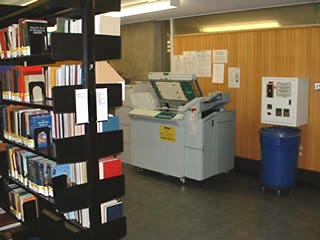 Consider, as an example, the photocopier — in many ways a predecessor of the world wide web in that it is designed to deconstruct and multiply documents. Photocopiers have been unbundling books in libraries long before there was any such thing as Google Book Search, helping users break through the commodified shell to get at the fruit within.
Consider, as an example, the photocopier — in many ways a predecessor of the world wide web in that it is designed to deconstruct and multiply documents. Photocopiers have been unbundling books in libraries long before there was any such thing as Google Book Search, helping users break through the commodified shell to get at the fruit within.
I know there are some countries in Europe that funnel a share of proceeds from library photocopiers back to the publishers, and this seems to be a reasonably fair compromise. But the role of the photocopier in most libraries of the world is more subversive, gently repudiating, with its low hum, sweeping light, and clackety trays, the idea that there can really be such a thing as intellectual property.
That being said, few would dispute the right of an author to benefit economically from his or her intellectual labor; we just have to ask whether the current system is really serving in the authors’ interest, let alone the public interest. New technologies have released intellectual works from the restraints of tangible property, making them easily accessible, eminently exchangable and never out of print. This should, in principle, elicit a hallelujah from authors, or at least the many who have written works that, while possessed of intrinsic value, have not succeeded in their role as commodities.
But utopian visions of an intellecutal gift economy will ultimately fail to nourish writers who must survive in the here and now of a commercial market. Though peer-to-peer gift economies might turn out in the long run to be financially lucrative, and in unexpected ways, we can’t realistically expect everyone to hold their breath and wait for that to happen. So we find ourselves at a crossroads where we must soon choose as a society either to clamp down (to preserve existing business models), liberalize (to clear the field for new ones), or compromise.
In her essay “Books in Time,” Berkeley historian Carla Hesse gives a wonderful overview of a similar debate over intellectual property that took place in 18th Century France, when liberal-minded philosophes — most notably Condorcet — railed against the state-sanctioned Paris printing monopolies, demanding universal access to knowledge for all humanity. To Condorcet, freedom of the press meant not only freedom from censorship but freedom from commerce, since ideas arise not from men but through men from nature (how can you sell something that is universally owned?). Things finally settled down in France after the revolution and the country (and the West) embarked on a historic compromise that laid the foundations for what Hesse calls “the modern literary system”:
The modern “civilization of the book” that emerged from the democratic revolutions of the eighteenth century was in effect a regulatory compromise among competing social ideals: the notion of the right-bearing and accountable individual author, the value of democratic access to useful knowledge, and faith in free market competition as the most effective mechanism of public exchange.
Barriers to knowledge were lowered. A system of limited intellectual property rights was put in place that incentivized production and elevated the status of writers. And by and large, the world of ideas flourished within a commercial market. But the question remains: can we reach an equivalent compromise today? And if so, what would it look like? 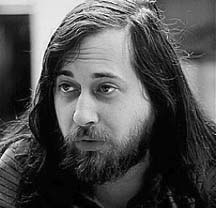 Creative Commons has begun to nibble around the edges of the problem, but love it as we may, it does not fundamentally alter the status quo, focusing as it does primarily on giving creators more options within the existing copyright system.
Creative Commons has begun to nibble around the edges of the problem, but love it as we may, it does not fundamentally alter the status quo, focusing as it does primarily on giving creators more options within the existing copyright system.
Which is why free software guru Richard Stallman announced in an interview the other day his unqualified opposition to the Creative Commons movement, explaining that while some of its licenses meet the standards of open source, others are overly conservative, rendering the project bunk as a whole. For Stallman, ever the iconoclast, it’s all or nothing.
But returning to our theme of compromise, I’m struck again by this idea of a tax on photocopiers, which suggests a kind of micro-economy where payments are made automatically and seamlessly in proportion to a work’s use. Someone who has done a great dealing of thinking about such a solution (though on a much more ambitious scale than library photocopiers) is Terry Fisher, an intellectual property scholar at Harvard who has written extensively on practicable alternative copyright models for the music and film industries (Ray and I first encountered Fisher’s work when we heard him speak at the Economics of Open Content Symposium at MIT last month).
 The following is an excerpt from Fisher’s 2004 book, “Promises to Keep: Technology, Law, and the Future of Entertainment”, that paints a relatively detailed picture of what one alternative copyright scheme might look like. It’s a bit long, and as I mentioned, deals specifically with the recording and movie industries, but it’s worth reading in light of this discussion since it seems it could just as easily apply to electronic books:
The following is an excerpt from Fisher’s 2004 book, “Promises to Keep: Technology, Law, and the Future of Entertainment”, that paints a relatively detailed picture of what one alternative copyright scheme might look like. It’s a bit long, and as I mentioned, deals specifically with the recording and movie industries, but it’s worth reading in light of this discussion since it seems it could just as easily apply to electronic books:
….we should consider a fundamental change in approach…. replace major portions of the copyright and encryption-reinforcement models with a variant of….a governmentally administered reward system. In brief, here’s how such a system would work. A creator who wished to collect revenue when his or her song or film was heard or watched would register it with the Copyright Office. With registration would come a unique file name, which would be used to track transmissions of digital copies of the work. The government would raise, through taxes, sufficient money to compensate registrants for making their works available to the public. Using techniques pioneered by American and European performing rights organizations and television rating services, a government agency would estimate the frequency with which each song and film was heard or watched by consumers. Each registrant would then periodically be paid by the agency a share of the tax revenues proportional to the relative popularity of his or her creation. Once this system were in place, we would modify copyright law to eliminate most of the current prohibitions on unauthorized reproduction, distribution, adaptation, and performance of audio and video recordings. Music and films would thus be readily available, legally, for free.
Painting with a very broad brush…., here would be the advantages of such a system. Consumers would pay less for more entertainment. Artists would be fairly compensated. The set of artists who made their creations available to the world at large–and consequently the range of entertainment products available to consumers–would increase. Musicians would be less dependent on record companies, and filmmakers would be less dependent on studios, for the distribution of their creations. Both consumers and artists would enjoy greater freedom to modify and redistribute audio and video recordings. Although the prices of consumer electronic equipment and broadband access would increase somewhat, demand for them would rise, thus benefiting the suppliers of those goods and services. Finally, society at large would benefit from a sharp reduction in litigation and other transaction costs.
While I’m uncomfortable with the idea of any top-down, governmental solution, this certainly provides food for thought.
